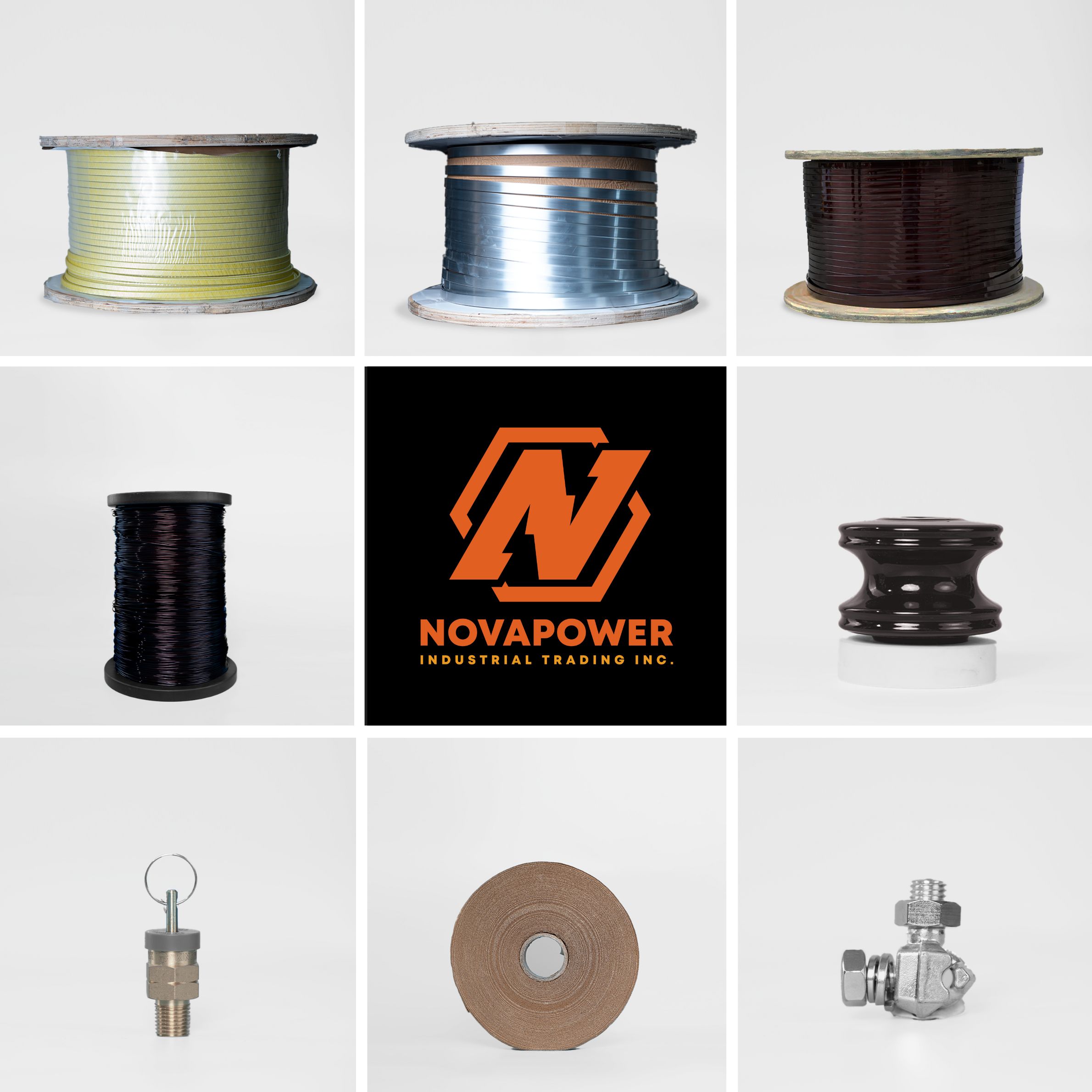
Our Product Offering
Nova-Power Industrial Trading Inc. provides a wide range of transformer essentials for winding, core, insulation, and accessories
Learn moreLearn more about what powers society
Electricity powers modern society, it doesn't magically appear in our outlets. It's a product of careful generation, a process that harnesses various energy sources and converts them into a controlled flow of energy that we can rely on daily. The fundamental principle behind most electricity generation involves moving a conductor (like a wire) through a magnetic field, or changing the magnetic field around a conductor. This induces an electromotive force (voltage), which pushes electrons and creates an electric current.
Power plants employ diverse methods to achieve this. Burning fossil fuels like coal, natural gas, or oil heats water to create steam, which spins turbines connected to generators. Nuclear power utilizes controlled nuclear fission to generate heat for the same purpose. Renewable sources like wind and solar directly drive turbines or convert sunlight into electricity via photovoltaic cells. Hydropower harnesses the energy of flowing water to turn turbines.
Regardless of the source, power is typically generated at medium to high voltages to facilitate efficient long-distance transmission. This high-voltage electricity travels through a network of transmission lines, minimizing energy loss along the way. However, this voltage is far too high for direct use in our homes and businesses.
This is where the distribution transformer steps in. As high-voltage electricity reaches local substations and ultimately the vicinity of our buildings, it needs to be safely reduced to usable levels (typically 120V or 240V in many regions). This crucial voltage transformation is the primary function of the distribution transformer.
Distribution transformers play a crucial role in the electric power distribution system. They are responsible for the final voltage transformation, stepping down the voltage from the distribution lines to the level used by consumers. Their invention was key to making AC power distribution feasible.
These robust devices, often seen mounted on poles or pads, operate based on the principle of electromagnetic induction. They consist of two or more coils of wire wrapped around a common magnetic core. The high-voltage electricity from the distribution lines enters the primary winding. This alternating current creates a changing magnetic field in the core. This changing magnetic field, in turn, induces a voltage in the secondary winding, which has fewer turns than the primary winding. The ratio of turns between the primary and secondary windings determines the voltage transformation – fewer turns in the secondary result in a lower output voltage.
Distribution transformers are essential for ensuring that the electricity delivered to our homes and businesses is safe and compatible with our appliances and devices. They are the final link in the complex chain that brings the power generated at distant plants right to our fingertips, enabling the conveniences and technologies that define modern life.
Key Characteristics:
Based on Mounting Location
Based on Type of Insulation
Based on Number of Phases
Based on Voltage Class
Distribution transformers are designed to operate within specific voltage ranges for both the primary (high-voltage) and secondary (low-voltage) sides. Voltage class defines the nominal system voltage the transformer connects to. Primary voltages vary by region (e.g., several kV to tens of kV), while secondary voltages are standardized (e.g., 120/240V, 230/400V).
Based on Basic Impulse Insulation Level (BIL)
BIL indicates the transformer's ability to withstand high-voltage surges from lightning or switching events. It's a measure of insulation strength. Transformers in high-surge environments require higher BIL ratings to prevent failure.
Understanding these classifications is crucial for selecting the right distribution transformer, ensuring efficient, safe, and reliable power delivery. Nova-Power Industrial Trading Inc. offers a wide range of products to cater to your transfomer needs.

Nova-Power Industrial Trading Inc. provides a wide range of transformer essentials for winding, core, insulation, and accessories
Learn more
Nova-Power Industrial Trading Inc. has been supplying local transformer manufacturers of varying company size with high-quality and reliable transformer parts and accessories.
Learn more